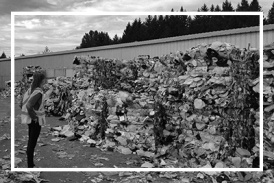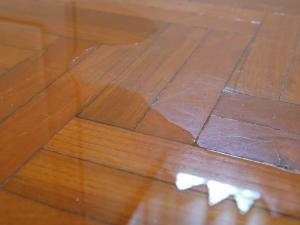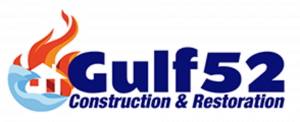Mitigating Water Damage During Storm Events Requires Strategic Planning, Says Gulf Coast Preparedness Leader
Earl Carr, Jr., president of Gulf 52 in Hammond, Louisiana, emphasizes that water intrusion can be reduced significantly through proper preparation and site management before storms occur.
“Water damage is preventable in many cases,” said Carr. “The key is to treat it as a systems problem—one that involves roofing, drainage, grading, sealing, and planning. A failure in one area can lead to a chain reaction of damage elsewhere.”
Heavy rainfall, rising water tables, wind-driven rain, and poor drainage infrastructure are all contributing factors. Prevention requires a multi-layered approach that begins long before a storm enters the forecast.
Key Prevention Measures for Storm-Related Water Damage
1. Inspect and Maintain the Roof
The roof serves as the primary barrier against rain. Damaged, missing, or poorly sealed shingles, flashing, or vent boots allow water to penetrate into the attic and wall cavities. Regular inspections for signs of aging, cracks, loose materials, or mold are critical. All repairs should be completed with durable materials rated for high wind and water exposure.
2. Clean and Secure Gutters and Downspouts
Clogged gutters lead to water overflow that can pool near foundations or back up into fascia boards. Downspouts should be securely attached, angled properly, and extended at least five feet from the structure. Blockages caused by leaves, granules, and nesting material must be cleared out before each storm season.
3. Check Grading and Drainage
The ground surrounding the structure should slope away from the foundation. Improper grading or sunken areas can cause water to flow toward the building, increasing the likelihood of interior seepage. Landscape adjustments and the use of French drains or swales may be required in areas where regrading is not practical.
4. Inspect Windows, Doors, and Sealants
Cracks in caulking or degraded weather stripping around doors and windows create points of entry for water. Wind-driven rain can force moisture into small gaps, especially in older or poorly installed fixtures. High-quality, storm-rated caulking should be applied around all penetrations, including vents, hose bibs, and cable entry points.
5. Install or Test Sump Pumps
For properties with basements or below-grade structures, sump pumps serve as critical flood prevention tools. Units should be tested monthly and have battery or generator backups to ensure operation during power outages. Discharge lines must lead water away from the building and remain free of obstructions.
6. Elevate Utilities and Critical Systems
HVAC units, water heaters, electrical panels, and appliances located in ground-level or basement areas should be elevated on platforms or relocated to higher elevations. If elevation is not feasible, protective barriers or waterproof enclosures can reduce exposure.
7. Seal Foundation Cracks and Penetrations
Hairline cracks in concrete can allow water to enter over time, especially under pressure from saturated soil. Sealants designed for foundation applications should be used to fill cracks and joints. Any known utility penetrations through walls or slabs should be reinforced with hydraulic cement or polyurethane-based materials.
8. Use Sandbags and Temporary Barriers in Flood-Prone Areas
In areas with a history of floodwater encroachment, sandbags or inflatable flood barriers may be deployed ahead of storms to redirect water. These should be used in combination with permanent drainage improvements rather than as a sole line of defense.
9. Protect Interior Contents and Document Conditions
Important documents, valuables, and electronics should be stored in waterproof containers or relocated to higher elevations. Property conditions should be documented with timestamped photos and videos prior to the storm, including exterior drainage systems and interior finishes.
10. Review Local Flood Zone Data and Evacuation Routes
Understanding FEMA flood zone designations and historical floodplain boundaries helps identify high-risk areas. This information should guide both structural planning and emergency evacuation strategies. Evacuation routes and shelter locations should be confirmed ahead of time, particularly in areas with limited access following heavy rainfall.
11. Conduct an Annual Emergency Preparedness Review
Every year before hurricane season, a property assessment should be conducted to evaluate vulnerabilities related to water intrusion. This includes a review of drainage paths, elevation of structures, sealing of access points, and operational status of pumps and backup systems.
Stormwater infiltration causes both immediate and long-term impacts. Moisture trapped inside walls or beneath flooring creates an environment conducive to mold, wood rot, and insulation degradation. Electrical shorts and circuit damage can also result when water contacts live components. Delays in remediation often lead to more extensive structural failure and greater financial losses.
Planning ahead and reinforcing vulnerable systems protects structural integrity and improves recovery speed after storms. Property owners who prioritize these preventative measures reduce the likelihood of major water damage and lower the overall cost of storm recovery.
Morgan Thomas
Rhino Digital, LLC
+1 504-875-5036
email us here
Visit us on social media:
Facebook
Legal Disclaimer:
EIN Presswire provides this news content "as is" without warranty of any kind. We do not accept any responsibility or liability for the accuracy, content, images, videos, licenses, completeness, legality, or reliability of the information contained in this article. If you have any complaints or copyright issues related to this article, kindly contact the author above.
ALEJANDRO ROJAS SELECTED AS TOP CORPORATE STRATEGIST OF THE YEAR BY IAOTP
Equipment as a Service Market Value to Surpass $1.12B By 2032, Says DataM Intelligence
Cloud ERP Market Boom To $176.93B By 2032 | Says DataM Intelligence - Get the Insights
Kalendarium
Więcej ważnych informacji
 Jedynka Newserii
Jedynka Newserii

 Jedynka Newserii
Jedynka Newserii

Handel

Ze względu na różnice w cenach surowce wtórne przegrywają z pierwotnymi. To powoduje problemy branży recyklingowej
Rozporządzenie PPWR stawia ambitne cele w zakresie wykorzystania recyklatów w poszczególnych rodzajach opakowań. To będzie oznaczało wzrost popytu na materiały wtórne pochodzące z recyklingu. Obecnie problemy branży recyklingu mogą spowodować, że popyt będzie zaspokajany głównie przez import. Dziś do dobrowolnego wykorzystania recyklatów nie zachęcają przede wszystkim ceny – surowiec pierwotny można kupić taniej niż ten z recyklingu.
Przemysł spożywczy
Rośnie presja konkurencyjna na unijne rolnictwo. Bez rekompensat sytuacja rolników może się pogarszać

Rolnictwo i żywność, w tym rybołówstwo, są sektorami strategicznymi dla UE. System rolno-spożywczy, oparty na jednolitym rynku europejskim, wytwarza ponad 900 mld euro wartości dodanej. Jego konkurencyjność stoi jednak przed wieloma wyzwaniami – to przede wszystkim eksport z Ukrainy i niedługo także z krajów Mercosur, a także presja związana z oczekiwaniami konsumentów i Zielonym Ładem. Bez rekompensat rolnikom może być trudno tym wyzwaniom sprostać.
Transport
Infrastruktury ładowania elektryków przybywa w szybkim tempie. Inwestorzy jednak napotykają szereg barier

Liczba punktów ładowania samochodów elektrycznych wynosi dziś ok. 10 tys., a tempo wzrostu wynosi ok. 50 proc. r/r. Dynamika ta przez wiele miesięcy była wyższa niż wyniki samego rynku samochodów elektrycznych, na które w poprzednim roku wpływało zawieszenie rządowych dopłat do zakupu elektryka. Pierwszy kwartał br. zamknął się 22-proc. wzrostem liczby rejestracji w ujęciu rocznym, ale kwiecień przyniósł już wyraźne odbicie – o 100 proc.
Partner serwisu
Szkolenia

Akademia Newserii
Akademia Newserii to projekt, w ramach którego najlepsi polscy dziennikarze biznesowi, giełdowi oraz lifestylowi, a także szkoleniowcy z wieloletnim doświadczeniem dzielą się swoją wiedzą nt. pracy z mediami.










.gif)

 |
| |
| |
|